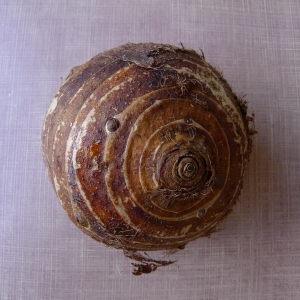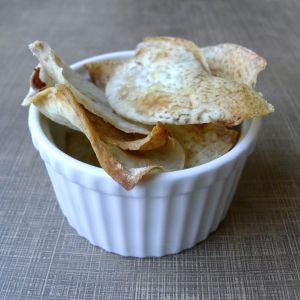Baked Malanga Root Chips
 Meet the malanga root. Probably the most unappetizing looking produce item ever. You always see well composed still-life paintings of produce. And I'm sure the painters really wanted to include malanga so as not to exclude it. Which is why it's hypothetically painted underneath the table on which the still life is placed. Unfortunately, when baked, malanga is delicious. Which means you will need to fill your cart with this wierdo produce at the store.
Meet the malanga root. Probably the most unappetizing looking produce item ever. You always see well composed still-life paintings of produce. And I'm sure the painters really wanted to include malanga so as not to exclude it. Which is why it's hypothetically painted underneath the table on which the still life is placed. Unfortunately, when baked, malanga is delicious. Which means you will need to fill your cart with this wierdo produce at the store.
Description
The malanga root is brown, slightly furry with an inconsistent shape. There is no malanga root perfect. The average root weighs between a half and two pounds. Cut it open and you'll find (Bob Barker voice) a new car!...No, wait. You'll find either pinkish, cream, or yellow insides.
Malanga can be found year round at most international markets, especially in the Cuban section. When cooked, the root has a nutlike flavor. When boiled, malanga is smooth and almost creamy. Because it's a natural thickener, malanga does well in stews.
It is also known as: yautia, cocoyam, eddo, coco, tannia, sato-imo and Japanese potatoes.
Nutrition
Adapted from Martha Stewart Taro Chip Recipe
- 1 small/medium malanga root
- 1 tablespoon plus 1/2 teaspoon olive oil
- Coarse salt
Dietitian Nutritionist and cookbook author sharing flavor-forward recipes and simplified science-driven wellness.

